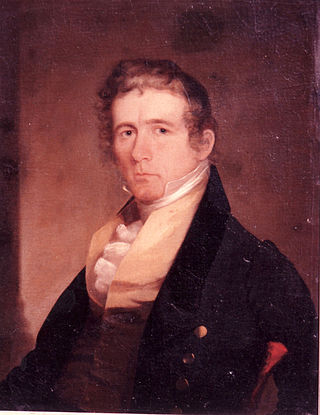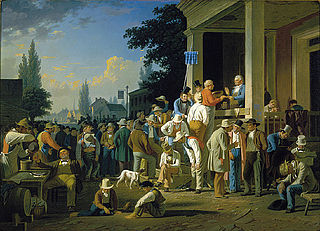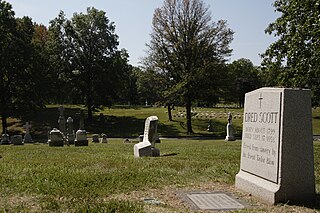
Manuel Lisa, also known as Manuel de Lisa, was a Spanish citizen and later, became an American citizen who, while living on the western frontier, became a landowner, merchant, fur trader, United States Indian agent, and explorer. Lisa was among the founders, in St. Louis, of the Missouri Fur Company, an early fur trading company. Manuel Lisa gained respect through his trading among Native American tribes of the upper Missouri River region, such as the Teton Sioux, Omaha and Ponca.

The Osage Nation is a Midwestern American tribe of the Great Plains. The tribe began in the Ohio and Mississippi river valleys around 700 B.C. along with other groups of its language family, then migrated west in the 17th century due to Iroquois incursions.

Joseph Robidoux IV (1783–1868), was an American fur trader credited as the founder of St. Joseph, Missouri, which developed around his Blacksnake Hills Trading Post. His buildings in St. Joseph, known as Robidoux Row, are listed on the National Register of Historic Places. Of French Canadian descent, he was born in St. Louis, as were his mother and most of his brothers, when it was a predominately French-speaking colonial town.

René-Auguste Chouteau Jr., also known as Auguste Chouteau, was the founder of St. Louis, Missouri, a successful fur trader and a politician. He and his partner had a monopoly for many years of fur trade with the large Osage tribe on the Missouri River. He had numerous business interests in St. Louis and was well-connected with the various rulers: French, Spanish, and American.
Chouteau was the name of a highly-successful ethnically-French furtrading family based in Saint Louis, Missouri, which they helped found.

Fort Osage was an early 19th-century factory trading post run by the United States Government in western Missouri on the American frontier; it was located in present-day Sibley, Missouri. The Treaty of Fort Clark, signed with certain members of the Osage Nation in 1808, called for the United States to establish Fort Osage as a trading post and to protect the Osage from tribal enemies.

The history of the Kansas City metropolitan area relates to the area around the confluence of the Kansas and Missouri Rivers and the modern-day city of Kansas City, Missouri.

The Chouteau Bridge a four-lane girder bridge on Route 269 across the Missouri River between Jackson County, Missouri, and Clay County, Missouri. The bridge is named for François Chouteau, who was a member of the Chouteau fur trapping family and is considered the first permanent settler in what became Kansas City.

Jean-Pierre Chouteau was a French Creole fur trader, merchant, politician, and slaveholder. An early settler of St. Louis from New Orleans, he became one of its most prominent citizens. He and his family were prominent in establishing the fur trade in the city, which became the early source of its wealth.

Pierre Chouteau Jr., also referred to as Pierre Cadet Chouteau, was an American merchant and a member of the wealthy Chouteau fur-trading family of Saint Louis, Missouri.
Auguste Pierre Chouteau was a member of the Chouteau fur-trading family who established trading posts in what is now the U.S. state of Oklahoma.

Peter Abadie Sarpy was a French-American entrepreneur and fur trader. He was the owner and operator of several fur trading posts essential to the development of the Nebraska Territory and a thriving ferry business. Also, he helped plan the towns of Bellevue and Decatur, Nebraska. Nebraska's legislature named Sarpy County after him in honor of his service to the state.

George Champlin Sibley was an American explorer, soldier, Indian agent, politician.

White Plume, also known as Nom-pa-wa-rah, Manshenscaw, and Monchousia, was a chief of the Kaw Indigenous American tribe. He signed a treaty in 1825 ceding millions of acres of Kaw land to the United States. Most present-day members of the Kaw Nation of Oklahoma trace their lineage back to him. He was the great-great-grandfather of Charles Curtis, 31st Vice President of the United States.

The Great Osage Trail, also known as the Osage Trace or the Kaw Trace, was one of the more well-known Native American trails through the countryside of the Midwest and Plains States of the U.S., pathways blazed by herds of buffalo or other migrating wildlife.
Fort Carondelet was a fort located along the Osage River in Vernon County, Missouri, constructed in 1795 as an early fur trading post in Spanish Louisiana by the Chouteau family. The fort also was used by the Spanish colonial government to maintain good relations with the Osage Nation. Sold by the Chouteau family in 1802, the fort was abandoned the same year by its new owners. By the time of an 1806 visit by Zebulon Pike on his expedition through southern Louisiana, the buildings were in disrepair. Although archaeological remains of the fort and its buildings were extant in 1874, a congregation known as the Church of Israel has occupied the site since the 1940s.

The Boonslick, or Boone's Lick Country, is a cultural region of Missouri along the Missouri River that played an important role in the westward expansion of the United States and the development of Missouri's statehood in the early 19th century. The Boone's Lick Road, a route paralleling the north bank of the river between St. Charles and Franklin, Missouri, was the primary thoroughfare for settlers moving westward from St. Louis in the early 19th century. Its terminus in Franklin marked the beginning of the Santa Fe Trail, which eventually became a major conduit for Spanish trade in the Southwestern United States. Later it connected to the large emigrant trails, including the Oregon and California Trails, used by pioneers, gold-seekers and other early settlers of the West. The region takes its name from a salt spring or "lick" in western Howard County, used by Nathan and Daniel Morgan Boone, sons of famed frontiersman Daniel Boone.

Calvary Cemetery is a Roman Catholic cemetery located in St. Louis, Missouri and operated by the Archdiocese of St. Louis. Founded in 1854, it is the second oldest cemetery in the Archdiocese. Calvary Cemetery contains 470 acres (1.9 km2) of land and more than 300,000 graves, including those of General William Tecumseh Sherman, Dred Scott, Tennessee Williams, Kate Chopin, Louis Chauvin and Auguste Chouteau.
John Francis Alexander Sanford (1806–1857) was a frontiersman of the American west who worked with Native American tribes as an Indian agent. He later joined Pierre Chouteau Jr. in a fur trapping and trading business. He extended his interests into other areas of commerce and became very wealthy. In the final years of his life he was involved with the landmark court case of Dred Scott v. Sandford [sic], which is perhaps what he is best known for today. He suffered mental illness and died in an asylum.
Benito Andres Vázquez, was a Spanish soldier and later, became an American fur trader who, while living on the western frontier, became a merchant and explorer. He is the father of fur trader Louis Vasquez.

















